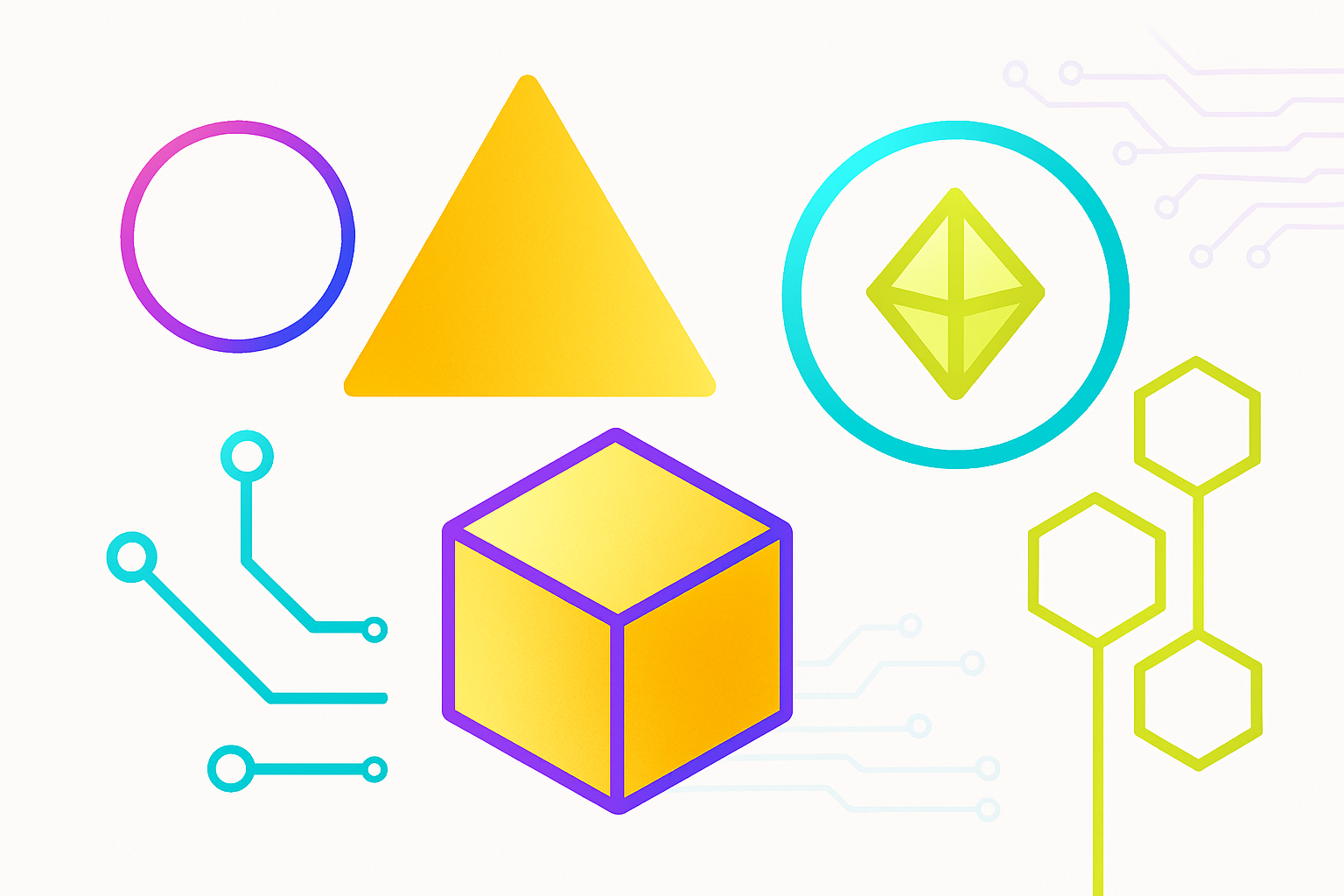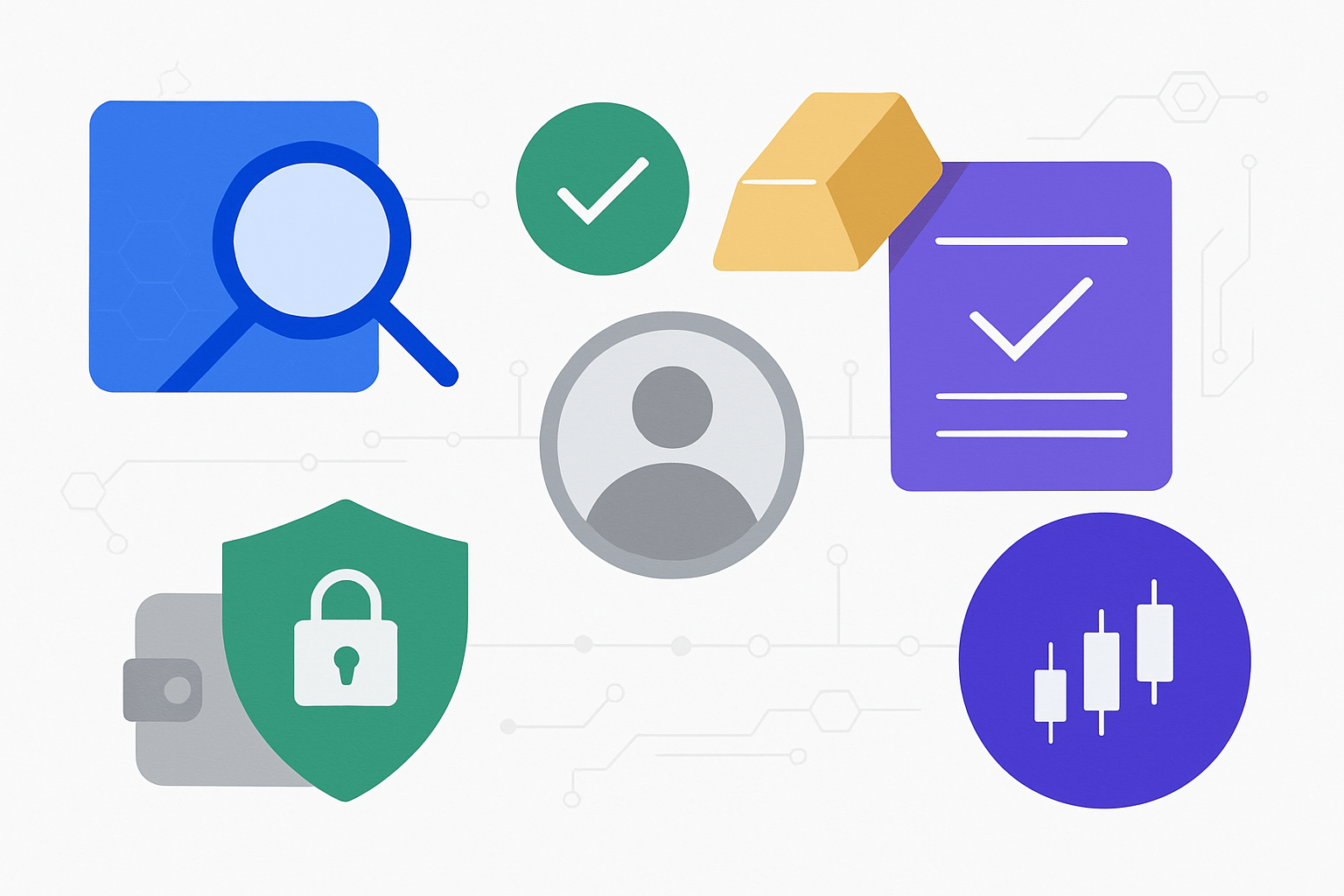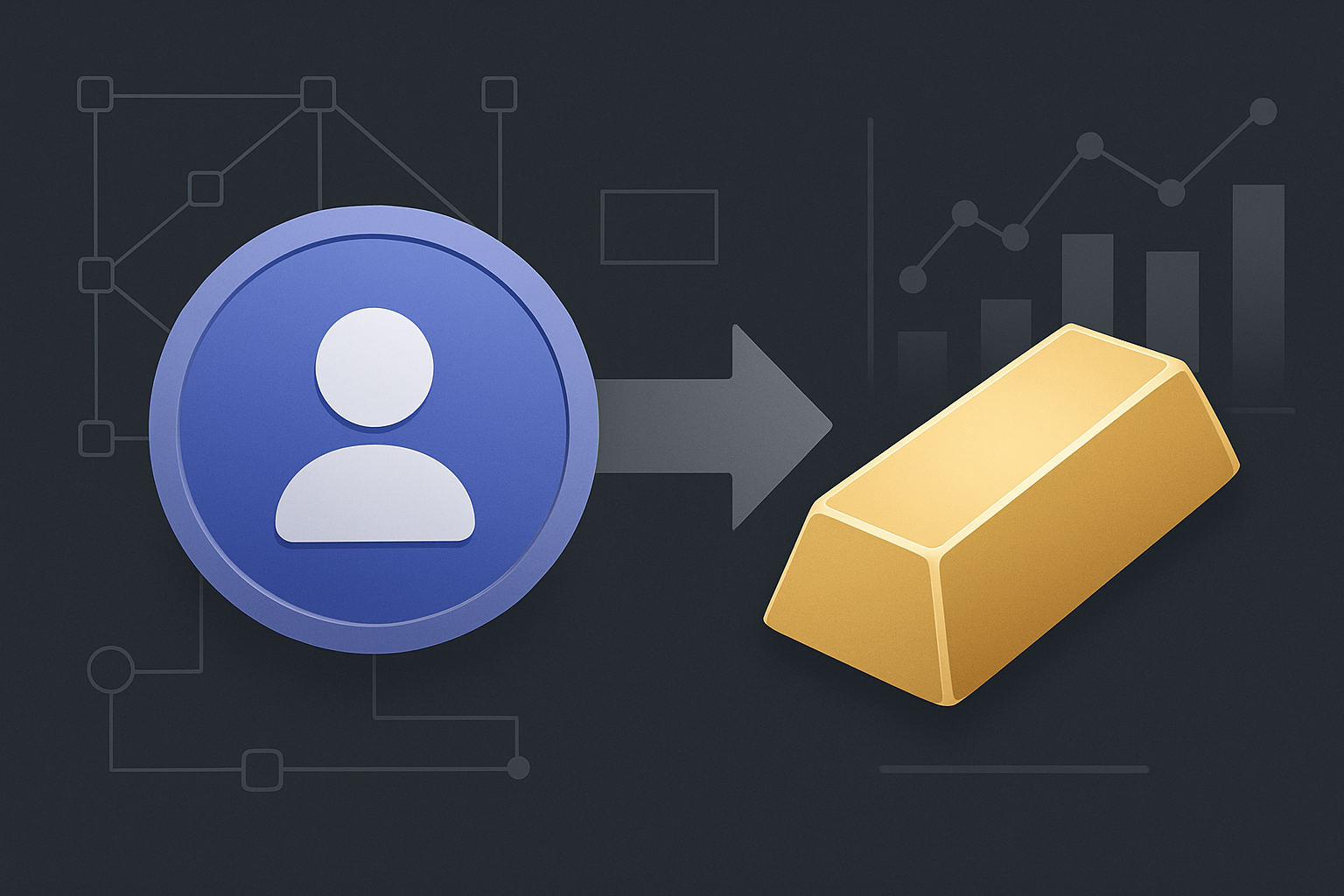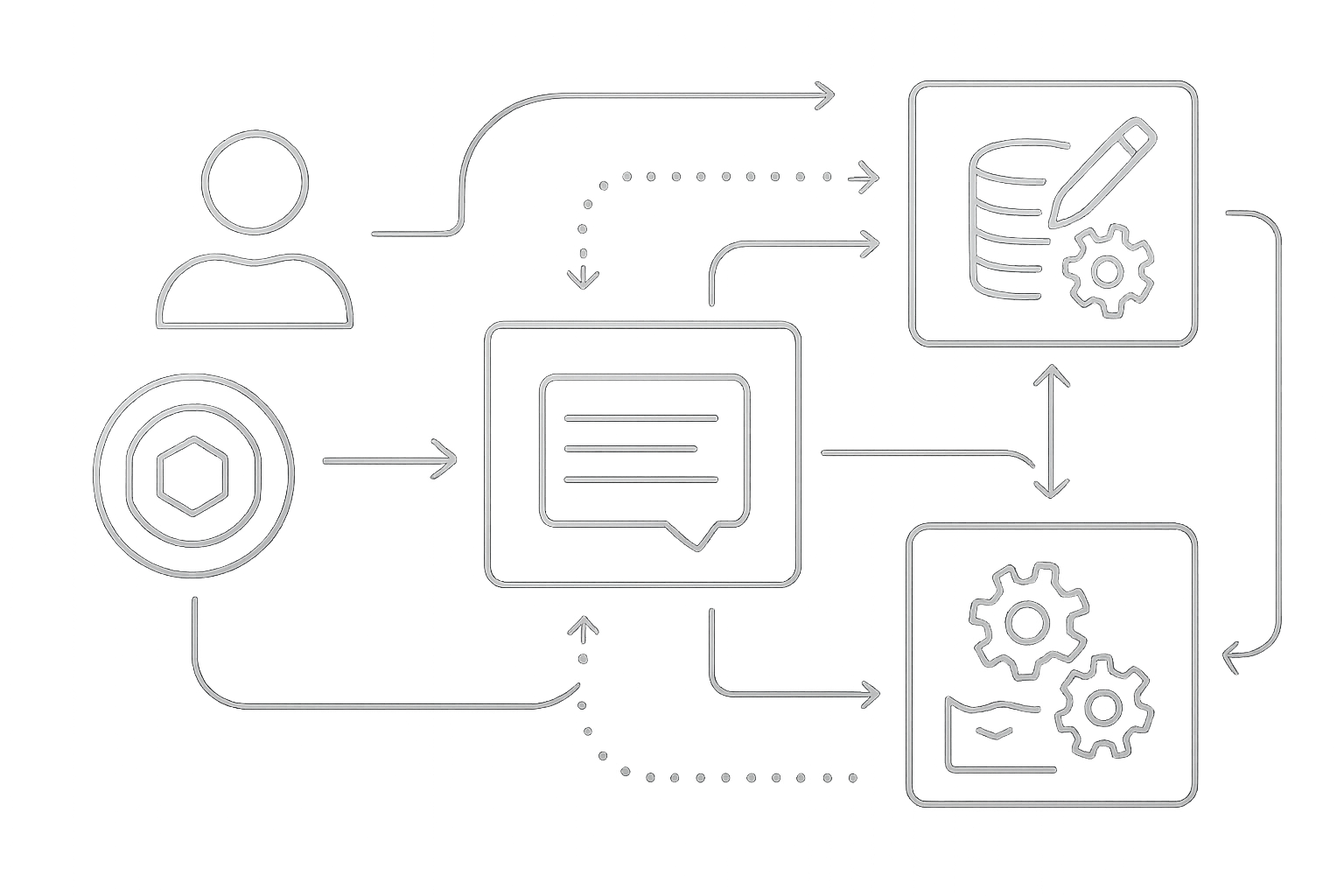Tokenized Gold Explained: How On-Chain Gold Tokens Work, Risks, and Real-World Backing

Gold has always been a cornerstone of wealth preservation, but the way investors access and own gold is evolving rapidly. Tokenized gold is at the forefront of this shift, combining the timeless value of physical bullion with the transparency, speed, and accessibility of blockchain technology. If you’re considering diversifying your portfolio or seeking a more flexible approach to gold investing, understanding how on-chain gold tokens work is essential.
What Is Tokenized Gold? The Basics Behind On-Chain Gold Tokens
Tokenized gold refers to digital tokens issued on a blockchain that represent direct ownership of physical gold. Each token typically corresponds to a specific amount of gold, for example, one PAX Gold (PAXG) token equals one fine troy ounce held in secure vaults. The real physical asset remains in custody with a professional provider, while the token acts as a digital certificate of ownership.
This structure offers several advantages over traditional gold investments:
- Fractional Ownership: Investors can purchase tiny fractions of an ounce, making gold accessible at lower entry points than ever before.
- 24/7 Liquidity: Unlike conventional markets that close on weekends or holidays, tokenized gold trades around the clock on global platforms.
- Transparency and Security: Blockchain records are immutable and publicly auditable, reducing fraud risk and increasing investor confidence.
- Cost Efficiency: Storage and insurance are handled by custodians at scale, often lowering fees for individual investors.
The current market price for PAX Gold (PAXG) stands at $3,939.32, down $25.22 (-0.64%) in the last 24 hours. As more investors seek digital solutions for hard assets, this intersection between traditional commodities and decentralized finance is gaining momentum.
Anatomy of a Gold-Backed Token: How Does It Really Work?
The key to any legitimate on-chain gold token is its direct linkage to real-world bullion. Here’s how most reputable projects operate:
- Sourcing and Storage: Physical gold is acquired by the issuer and stored in high-security vaults, often those approved by organizations like the London Bullion Market Association (LBMA).
- Issuance: For each unit of gold secured in storage, a corresponding digital token is minted on the blockchain.
- Auditing and Transparency: Regular independent audits verify that every token remains fully backed by physical metal; results are published for public review.
- Redemption Mechanism: Some tokens allow holders to redeem their tokens for actual bullion (subject to minimum amounts and jurisdictional rules), while others focus solely on digital trading.
This model not only democratizes access but also opens new doors for utility within decentralized finance (DeFi). Tokenized gold can be used as collateral for loans or integrated into yield-generating strategies without leaving the blockchain ecosystem. For an in-depth look at these mechanisms and leading issuers like Tether Gold or Paxos Gold, see our guide: How Tokenized Gold Works: Platforms, Issuers and Integration with DeFi.
The Real-World Backing: Trust Through Audits and Secure Vaulting
The promise of tokenized assets rests entirely on their real-world collateralization. Reputable projects provide transparent proof that every digital unit issued corresponds exactly to physical bullion stored securely off-chain. For instance, PAXG tokens are backed one-to-one by fine troy ounces held in LBMA-approved vaults in London, verifiable through published audit reports and blockchain explorer tools.
This robust backing system addresses one of the main concerns with digital assets: trust. Investors can track their holdings’ provenance from vault to wallet without relying solely on opaque intermediaries. However, it remains crucial to verify each project’s custodial arrangements and audit history before investing, not all offerings meet these high standards.
PAX Gold (PAXG) Price Prediction 2026-2031
Forecasts based on current market trends, gold price projections, tokenization adoption, and regulatory outlook.
| Year | Minimum Price | Average Price | Maximum Price | % Change (Avg YoY) | Market Scenario Insights |
|---|---|---|---|---|---|
| 2026 | $3,800 | $4,020 | $4,250 | +2.0% | Gold remains stable; increased adoption of tokenized gold products offsets mild regulatory headwinds. |
| 2027 | $3,900 | $4,180 | $4,500 | +4.0% | Gold price appreciates; tokenized gold gains traction in DeFi and global markets. |
| 2028 | $4,000 | $4,350 | $4,700 | +4.1% | Regulatory clarity boosts institutional interest; gold price steady with moderate crypto market growth. |
| 2029 | $4,100 | $4,480 | $4,950 | +3.0% | Blockchain integrations expand; gold demand rises amid global economic uncertainty. |
| 2030 | $4,200 | $4,620 | $5,200 | +3.1% | Tokenized assets become mainstream; gold serves as a hedge in volatile markets. |
| 2031 | $4,350 | $4,780 | $5,500 | +3.5% | Wider adoption and improved infrastructure; PAXG closely tracks gold spot price with added DeFi utility. |
Price Prediction Summary
PAX Gold (PAXG) is projected to experience steady, moderate price appreciation from 2026 to 2031, largely tracking the underlying gold market but with potential for small premiums or discounts due to tokenization demand and crypto sector trends. Average yearly growth is expected to be in the 2-4% range, reflecting gold’s historically stable nature and the expanding use cases for tokenized assets. Regulatory developments and broader crypto market cycles could introduce volatility, but real-world backing and increasing adoption in both traditional and DeFi markets provide a strong foundation for PAXG.
Key Factors Affecting PAX Gold Price
- Gold Spot Price Movements: As PAXG is physically backed, gold’s performance is the primary driver.
- Adoption of Tokenized Assets: Broader acceptance in DeFi, trading platforms, and wealth management.
- Regulatory Environment: Clarity and support for tokenized commodities could spur institutional adoption.
- Custodial and Redemption Risks: Confidence in secure storage and redeemability affects investor trust.
- Competition: Emergence of alternative gold tokens or synthetic gold products.
- Macro-Economic Trends: Inflation, interest rates, and geopolitical tensions impacting gold demand.
- Blockchain Innovations: Improved interoperability and integration with DeFi protocols.
Disclaimer: Cryptocurrency price predictions are speculative and based on current market analysis.
Actual prices may vary significantly due to market volatility, regulatory changes, and other factors.
Always do your own research before making investment decisions.
If you’re interested in learning how these processes are independently verified, including live auditing practices, explore our deep dive here: How Tokenized Gold Works: Auditing, Backing and Real-Time Verification Explained.
While on-chain gold tokens offer an unprecedented blend of accessibility and transparency, investors must navigate a landscape that is still maturing. Understanding both the potential and the pitfalls is vital for anyone considering tokenized gold as part of their portfolio.
Risks: What Every Investor Should Know
No asset is risk-free, and tokenized gold is no exception. The most significant risks fall into several categories:
- Regulatory Uncertainty: The legal status of tokenized commodities varies widely by jurisdiction. Ongoing regulatory developments could impact how these tokens are issued, traded, or redeemed.
- Custodial Risk: Since physical gold is held by third-party custodians, investors are exposed to risks if those custodians experience mismanagement or insolvency. Always research the reputation and audit practices of the issuer’s storage partners.
- Market Volatility and Premiums: During periods of high demand or market stress, token prices can deviate from spot gold, sometimes trading at a notable premium or discount. This can affect liquidity and redemption value.
- Redemption Limitations: Not all tokens allow physical redemption, and those that do often require minimum amounts or have geographic restrictions. Review these terms before investing if redeemability matters to you.
If you’re weighing these risks in comparison with traditional gold ETFs or direct bullion ownership, our guide on Tokenized Gold vs On-Chain Gold: Understanding the Difference provides a thorough breakdown.

The Value Proposition: Why Tokenized Gold Matters Now
The appeal of tokenized gold lies in its ability to combine centuries-old wealth preservation with modern blockchain advantages. At today’s market price provides $3,939.32 per PAX Gold (PAXG) token, precisely mirroring one troy ounce, the entry point for digital gold ownership remains tightly linked to global spot markets. Investors gain not only exposure to the underlying metal but also benefits like fractionalization, instant settlement, and integration with DeFi protocols for lending or yield generation.
This innovation is already reshaping how institutions and individuals allocate capital to precious metals. As more platforms adopt rigorous transparency standards and regulators clarify their positions, we can expect further growth in both adoption and utility for on-chain gold tokens.
Practical Tips for Investing in Tokenized Gold
- Diligence First: Investigate the issuer’s custodial arrangements, look for independent audits and LBMA-approved vaults as a baseline standard.
- Understand Redemption Rules: If you value physical delivery, check minimum thresholds and regional restrictions before purchasing tokens.
- Diversify Platforms: Consider spreading exposure across multiple reputable providers to mitigate single-point-of-failure risk.
- Monitor Regulatory Updates: Stay informed about evolving laws that could affect your ability to trade or redeem tokens in your jurisdiction.
If you’re ready to take your first step into digital bullion markets, or want a technical walkthrough, see our resource: How to Invest in Tokenized Gold: Step-by-Step Guide for First-Time Buyers.
Looking Ahead: The Future of Gold on Blockchain
The convergence of blockchain technology with real-world assets like gold signals a new era in commodity investing, one where trust is anchored by both code and collateral. While challenges remain around regulation and custody, the core value proposition stands strong: democratizing access to one of humanity’s oldest stores of value while leveraging cutting-edge digital infrastructure.
The next chapter will likely see deeper integration with decentralized finance (DeFi), broader acceptance among institutional players, and continued refinement of transparency standards, all underpinned by real-time price discovery such as today’s PAXG rate at $3,939.32. For thoughtful investors focused on stability without sacrificing innovation, tokenized gold offers a compelling bridge between tradition and technology.




